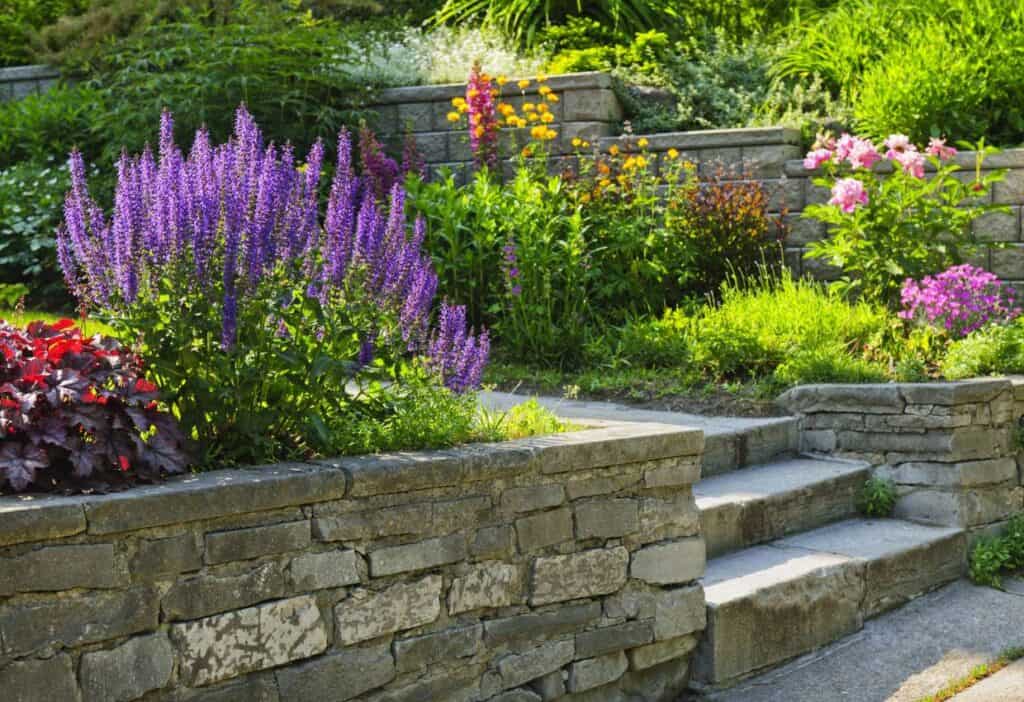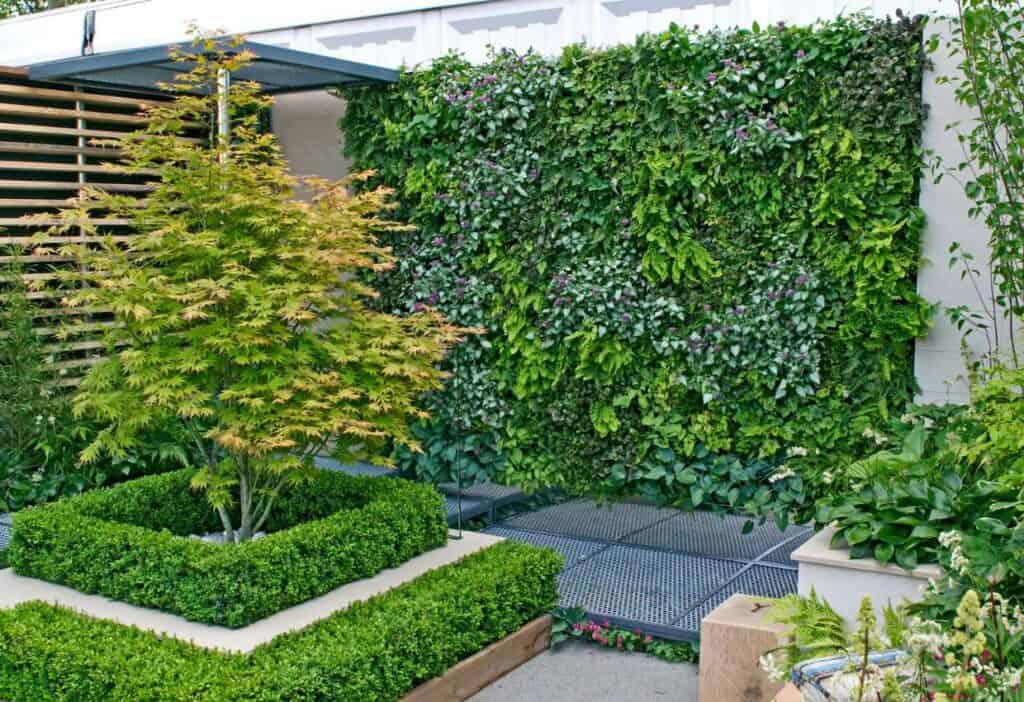Discover the perfect garden design for a small garden with these practical plant selection and space utilization tips. Uncover ways to turn small spaces into attractive and functional outdoor areas.

Small gardens present unique challenges but offer many possibilities for creating an inviting outdoor area that feels larger than its boundaries. Proper design can create an illusion of space by cleverly using features like vertical plantings, footpaths and focal points.
In small garden design, every element counts, and it’s essential to plan meticulously. Choices of plants, materials and garden features, such as seating areas, can transform a cramped outdoor space into a cozy retreat.
Understanding small garden spaces
Maximizing the potential of a small garden space requires careful planning. One must assess the area to understand its constraints and advantages while applying garden design principles to create a visually appealing and functional outdoor environment.
Assessing the space
When evaluating a small garden space, measuring the exact dimensions is imperative. This includes noting any permanent fixtures, such as walls or large trees, which will influence the design. One should also observe the lighting conditions throughout the day, as different plants have varying light requirements. Documentation of these elements helps make informed decisions about plant selection and layout.
Garden design principles
Unity, scale, balance and variety play pivotal roles in small garden design. Unity can be achieved by repeating colors or shapes throughout the garden. Using appropriately sized features is crucial to prevent the space from feeling cramped. Balance comes from symmetrical or asymmetrical arrangements that create visual harmony. Lastly, variety introduces interest with contrasting textures and forms. One might use diagonal or winding paths that draw the eye to create the illusion of more space. Using vertical space with wall plantings or tall, slender plants can enhance the perception of height.

Design elements
When considering a garden design for a small garden, the selection of plants, vertical elements and visual tricks are essential to create a sense of space and beauty. Incorporating elements like mirrors or decorative stones can enhance the garden’s appeal and create a serene, spacious atmosphere.
Choosing plants
For small gardens, plant choice should be strategic. Opt for species that offer year-round interest with varied textures and colors. Compact varieties that grow upwards rather than outwards, such as columnar trees or plants with a vertical habit, maximize greenery without occupying too much ground space. Companion planting herbs like lavender, basil and mint can enhance this strategy, as they not only add fragrance and variety but also attract beneficial insects while naturally repelling pests, further maximizing the use of space in a garden.
Vertical gardening
Vertical gardening takes advantage of upward space and can include wall-mounted planters, trellis-climbing vines or even green walls. It is an effective method to enhance the sense of height and layering in the garden, making the small area feel larger and more dynamic.
Creating illusions of space
Strategic design can give the impression of a larger garden. The use of light colors for walls and fences reflects light and makes a space feel open, while mirrors can visually double the garden’s size. A clear central area with surrounding planted borders draws the eye outward, enhancing the perception of space.
“If you’re eager to garden but worry you don’t have the space, look upwards. Plant a vertical garden using shelves with pots, hanging baskets or over-the-balcony fitted planters. You can grow herbs, tomatoes, peppers and more easily.”
— Sarita Harbour, An Off Grid Life
Small garden styles
Selecting the right style for a small garden can significantly influence its aesthetic appeal and functionality. Every design style has its special qualities that suit different tastes and requirements.
Minimalist garden
In minimalist garden designs, simplicity is the key. They typically feature a limited palette of plants and a focus on architectural elements. This use of space is efficient with clean lines, uncluttered areas and a neutral color scheme. A minimalist garden might showcase a carefully chosen selection of plants, sleek outdoor furniture and crisp, geometric layout patterns.
Cottage garden
A cottage garden is informal yet bursting with a vibrant mix of flowers, herbs and edibles. This style emphasizes a bountiful and slightly wild feel. Gardeners often use traditional materials such as wrought iron and natural stone, and the planting scheme incorporates a diverse mix, including everything from stunning tulip colors and roses to vegetables. This kind of garden might also include meandering paths or a small seating area to add to its rustic charm.
Modern urban garden
The modern urban garden style is known for its contemporary design principles, featuring bold, structured looks and often incorporating new materials. This could involve innovative features such as vertical gardens or statement-making planters with hardy plants, like lavender or bamboo, that thrive in urban environments. This design is planned to create an oasis in the hustle and bustle of city life.

Practical tips
Effective garden maintenance ensures that a small garden not only looks great but also thrives. Attention to soil health, efficient watering practices and seasonal care are crucial to a thriving garden space.
Soil
Proper soil preparation is the foundation of every successful garden. For small gardens, it’s essential to maximize fertility within limited space. One should conduct a soil test annually to check for pH balance and nutrient levels. Adding organic matter such as compost can improve soil structure, encourage beneficial microbial activity and provide plants with vital nutrients.
Watering solutions
Small gardens require strategic watering methods to prevent waste and ensure deep watering. Drip irrigation or soaker hoses offer efficient watering, delivering water directly to the plant’s roots and minimizing evaporation and runoff. Self-watering pots can be a worthwhile investment for container gardens to ensure consistent moisture levels.
Seasonal care
Each season brings different maintenance needs. In spring, mulching can help regulate soil temperature and retain moisture. Pruning in early spring or late winter keeps many plants healthy and controls their size. Summer demands regular deadheading of flowers to encourage new blooms. Autumn is the perfect time for planting spring bulbs and dividing perennials. At the same time, winter calls for protecting plants from frost and cold winds with covers or additional mulch.
Kristen Wood is a photographer, writer and creator of Schisandra and Bergamot and MOON and spoon and yum. She is also the author of Vegetarian Family Cookbook, Fermented Hot Sauce Cookbook and Hot Sauce Cookbook for Beginners. She is an herbalist and certified functional nutrition expert as well. Her work has been featured in various online and print publications, including Healthline, Martha Stewart, Yoga Journal and more.